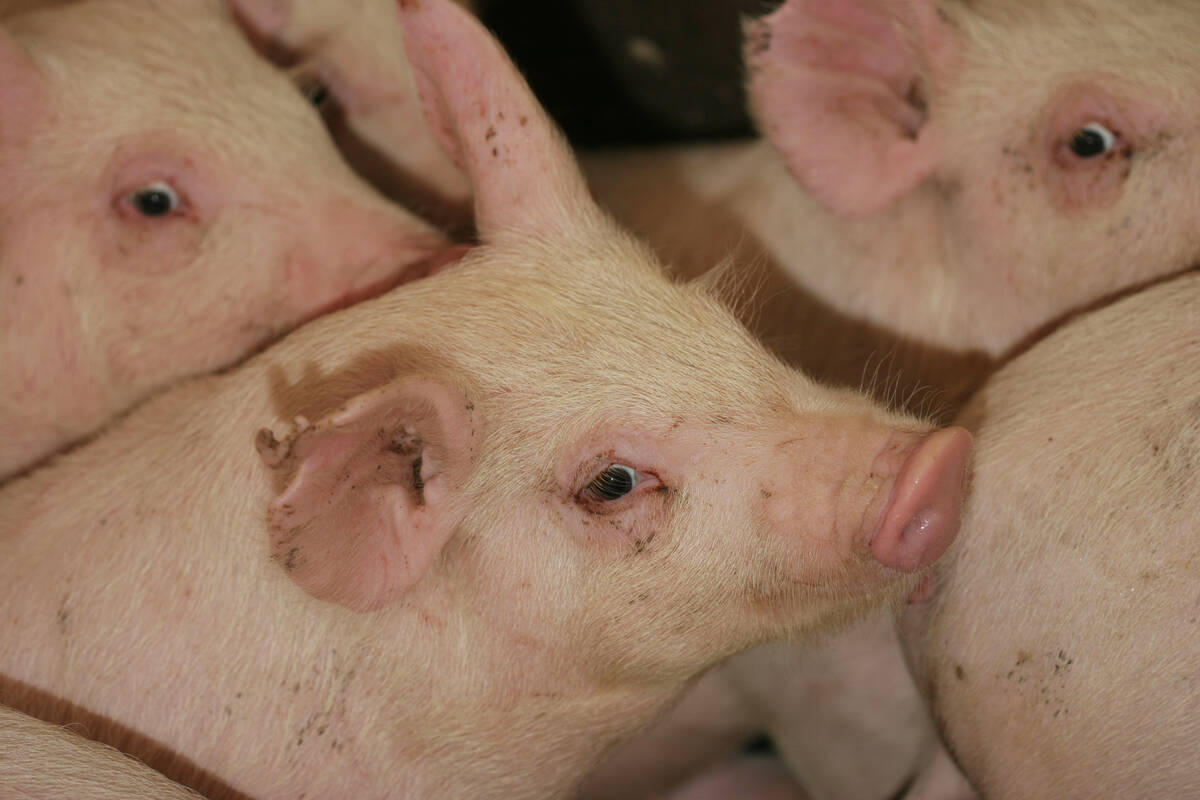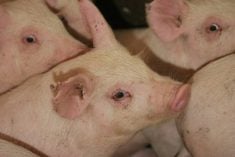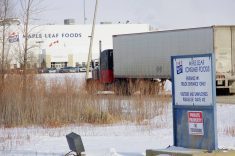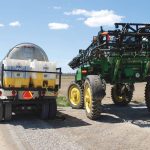RED DEER – When Gordon and Cathy Speirs decided to expand their dairy farm, they headed south rather than stay in Alberta.
The Speirs moved to Brillion, Wisconsin, the heart of the U.S. dairy industry.
“We wanted to be somewhere where we could be the big kids on the street, not the biggest kids, but a player in the industry,” Gordon Speirs said during the Western Canadian Dairy Seminar in Red Deer last month.
They wanted to work with a mature processing sector and receive good support from nearby veterinarians and suppliers.
Read Also

The Western Producer Livestock Report – September 25, 2025
The U.S. national live price average for barrows and gilts was $81.21 Sept. 17. It was $78.37 Sept. 9. U.S. hogs averaged $106.71 on a carcass basis Sept. 17, up from $106.10 Sept. 9.
They moved from Bowden, Alta., in the spring of 2003 and faced the same setbacks as other Canadian cattle producers when the discovery of BSE in Canada closed the borders to trade that May.
“We got some of our heifers across the border and three days before he (Gordon) was scheduled to return and get the last of them, BSE broke, the border was closed and we had 130 trapped on the wrong side of the border that we had to give away,” Cathy said.
That was a big financial blow, but the family recovered and is planning further expansion.
Their new life in the American dairy system is different, but the couple agreed it was the right move financially for them and their three children.
“It was a brilliant financial move and our opportunities in the next two years will be very good,” Gordon said in an interview.
They have increased their milking herd from 150 cows in Alberta to 1,150 cows in Wisconsin and employ 18 people. In total they have 2,400 animals on 109 acres. They believe they are better managers on a farm they built from scratch.
“When you have to care for 2,400 animals and 18 employees and manage forage and manure contracts, it made us better dairymen,” Cathy said.
American dairy producers are less concerned with political events such as World Trade Organization agreements and instead pay more attention to domestic issues such as local environmental laws, urban sprawl and animal rights threats.
Environmental regulations are different in Wisconsin and the Speirs feel that while Alberta’s Natural Resources Conservation Board is stricter, it is not necessarily doing a better job.
In Wisconsin, the state, county or township may have different rules and requirements for barn sites, waste disposal, manure management and water treatment. A manure plan is required in order to balance nitrogen, phosphorus and potassium applications. Producers must conduct soil tests every four years.
There are no minimum distance separation requirements between farms. The Speirs’ nearest neighbouring dairy is less than a kilometre away.
Wisconsin has about 1.25 million dairy cows but fewer farms each year. There are 130 processors in the state.
The Speirs ship two semi loads of milk a day and the processor provides daily quality reports by e-mail, which allows them to remedy problems immediately.
“If you are going to make quality milk, you need information,” Gordon said.
They manage their cows by groups and look at whole herd data. They do not have individual identification and only recently ordered radio frequency ear tags so they can electronically identify cows in the future.
“You’d have a really hard time buying an animal that has even got a birth date,” Gordon said.
They bought mostly heifers when they arrived and began building a herd. They were in for some surprises.
“We have learned since we have been down there that a Holstein sire can be recessive for Angus, Hereford or Jersey,” Cathy said.
The Speirs register their cows and do not accept mixed breeds.
In the U.S. milk is traded on the Chicago Mercantile Exchange, which they see as a problem because like grain, people who have nothing to do with producing or processing the product have a major influence on pricing decisions.
Having worked under the U.S. system and the Canadian supply managed system with its quotas, Gordon admitted he has never fully understood how milk is priced.
He does know if he receives $14 per hundredweight of milk, about $2 goes to service debt and the rest covers other expenses, including cost of living.
Medications and disease concerns are similar but under the Canadian quota system, the Speirs feel farmers are more apt to cull animals while in the U.S. they may keep cows longer so they keep producing milk.
They feel Canadian producers may be better represented through producer groups up to the national level.
In the U.S., they are not sure who speaks for them, whether it be co-operatives, processors, other dairy producers or the American Farm Bureau Federation.















